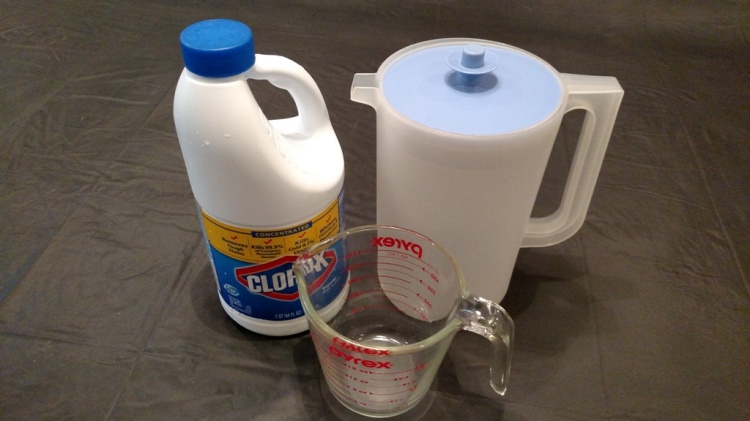I always tell people the better you prep your RV for winter storage, the better off you are the following spring, but that is water under the bridge at this point. Spring is in the air, and that means it’s time to shake the cobwebs off the RV and get it ready to roll.
When your RV sits in storage, lots of unexpected things can happen to it. For example, batteries lose their charge while sitting idle, tires lose air pressure while sitting idle, nests are made in appliance vents and the list goes on. So, there are lots of checks to make on an RV after storage to ensure it is ready for another adventure filled camping season without major maintenance issues.

The good news is, you can make the majority of the checks yourself. Some checks however, like testing or repairing the LP gas system, or inspecting brakes and wheel bearings on a trailer require the expertise of a technician or mechanic.
Note: If you do not feel comfortable or qualified to make these checks, schedule an appointment with your local RV dealer to help get your RV ready for camping season.
Throughout this post, I am including links to some of our helpful videos and articles that pertain to the topics being discussed. Let’s tackle some of the DIY spring checks right now.
RV Batteries
I like to start with the RV batteries because other checks require you have 12-volts. The condition of your RV batteries depends on how well they were cared for when they were in storage. A battery in storage will lose up to 10% of its charge every month. If you checked and re-charged the battery periodically during storage the battery should be ready to go. If you didn’t check and re-charge the battery the first step is to fully charge the battery.
Note: Distilled water should only be added to lead-acid batteries after fully charging the battery, unless the water level is already below the plates. The plates need to be covered at all times. Click here to read my post on checking & adding water to a RV battery
Depending on the battery’s state of charge and condition it might be possible to recharge the battery using the RV converters battery charger, especially if it is a 3-stage smart charger. For a quick picture of the battery’s state of charge check the battery indicator on the monitor panel. Next, plug the RV into a suitable electrical source and allow sufficient time for the battery charge. When the the battery is fully charged check and add distilled water as required. If the battery was removed for storage reinstall it making sure it is connected properly.
Note: When you work around lead-acid batteries, wear gloves and protective eye-wear, remove all jewelry and do not smoke or use any open flames. If you are not comfortable working around lead-acid batteries have a qualified RV service facility check the battery for you.
Watch this video for tips on how to extend the life of your RV batteries
RV Water System
After sitting in storage for several months the RV water system needs to be dewinterized, checked for leaks and sanitized. Make sure the freezing weather is gone for good prior to dewinterizing the plumbing system.
If your unit was winterized using non-toxic RV/Marine antifreeze you need to run fresh water through the entire water system until all traces of the antifreeze are removed. Hopefully no antifreeze was added to the fresh water holding tank, but if it was the first step is to drain all remnants of antifreeze from the fresh water tank. You should try to catch the antifreeze in a container or bucket to prevent it from draining on the ground. Next add some potable water to the fresh water holding tank and turn the 12-volt on-demand water pump on. Note: If you notice any water leaks turn the water pump off and try to identify and repair the leak if possible. Open all of the water faucets (one at a time) and run the water until there are no traces of the pink antifreeze at the faucets. Make sure you open both hot and cold water faucets. When the water is running clear take the water heater out of the by-pass mode (if applicable). If the water heater wasn’t bypassed the antifreeze will need to be drained from the water heater tank too. The antifreeze that was in the plumbing system will go into the gray water holding tank and can be emptied later. Now you can replace any water filter cartridges that were removed for storage.
When I take the RV out of storage I like to sanitize the RV water system, especially if RV antifreeze was in the plumbing system. Make sure all of the drains are closed and all drain plugs are installed. Take a quarter-cup of household bleach for every 15 gallons of water your fresh water tank holds. Mix the bleach with water into a one-gallon container and pour the solution into to the fresh water tank fill. Caution: If you have an on-demand water heater with a copper heat exchanger, the water heater must be by-passed. Do not run chlorinated water through the water heater. Fill the fresh water holding tank with potable water. Turn the water pump on and run water through all of the hot and cold faucets until you smell the bleach. Close the faucets and let this solution sit for twelve hours. Drain all of the water and re-fill the tank with potable water. Turn the water pump on and open all faucets, running the water until you no longer smell any bleach. It might be necessary to repeat this process to eliminate all signs of bleach.
Watch this video for a better idea of what items to check and how to do it
RV Appliances
If there is gas in the LP gas cylinders or LP gas tank open the gas supply and check the operation of the LP gas fired appliances. Make sure the water heater tank is full of water before testing the operation of the water heater. If an LP gas appliance is not operating properly have it inspected by an authorized RV service facility. Insects are attracted to the odorant added to LP gas and they build nests that can affect the appliance from operating properly.
Note: The LP gas system should have a leak test and LP gas operating pressure test performed annually. These tests should be performed by an authorized RV repair facility.
Check the furnace, range, water heater and the refrigerator in the LP gas mode. If all of the LP gas appliances operate properly, plug the unit into electricity and test the 120-volt appliances and accessories for proper operation. Make sure you have an adequate electrical source (30-50 amps) depending on your unit, prior to testing items like the microwave and roof air conditioner. After checking the refrigerator in the LP gas mode turn it off, and with the doors open allow sufficient time for it to return to room temperature before checking it in the electric mode.
RV Tires
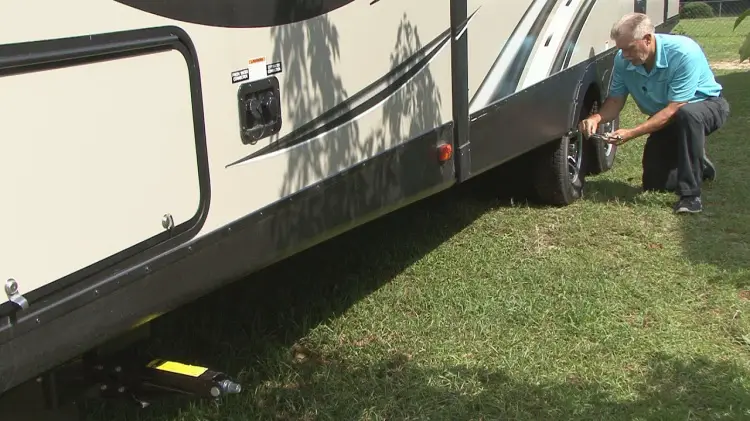
Tires lose a percentage of air pressure sitting in storage. Your RV tires can lose 2-3 psi a month. This means the tires on your RV can be dangerously low on air pressure. Check the tire pressure in all of the tires using a good tire inflation gauge, and adjust the inflation pressure to the manufacturer’s recommendation based on the load. Don’t forget the spare tire! Remember, failing to maintain correct tire pressure, based on the load, can result in fast tread wear, uneven wear, poor handling, and excessive heat which can lead to tire failure. Tire manufacturers publish load and inflation tables that should be followed for proper inflation pressure.
Watch this helpful video where I breakdown different types and quality of tire pressure gauges.
Click here to watch another video where I discuss some RV tire inflation tips
Trailer Hitch Components
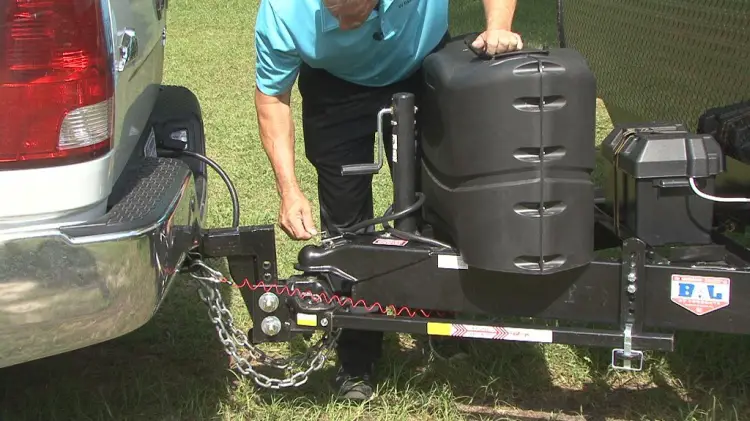 Take some time to familiarize yourself with all of the hitch components again. Inspect all of the components for any loose or rusted hardware, and/or cracked welds. Make sure all of the nuts, bolts and pins are in good condition. Inspect the hitch ball, the ball mount, the weight distributing bars and the sway control prior to towing the trailer. Inspect the hitch receiver on the tow vehicle for any loose hardware or broken welds. If you have a motorized RV and you tow a vehicle inspect the tow bar and all towing components. If you discover any problems during your inspections do not tow a trailer or vehicle until repairs are made.
Take some time to familiarize yourself with all of the hitch components again. Inspect all of the components for any loose or rusted hardware, and/or cracked welds. Make sure all of the nuts, bolts and pins are in good condition. Inspect the hitch ball, the ball mount, the weight distributing bars and the sway control prior to towing the trailer. Inspect the hitch receiver on the tow vehicle for any loose hardware or broken welds. If you have a motorized RV and you tow a vehicle inspect the tow bar and all towing components. If you discover any problems during your inspections do not tow a trailer or vehicle until repairs are made.
Watch this video to see how towing a trailer affects the tow vehicle
Tow Vehicle or RV Chassis
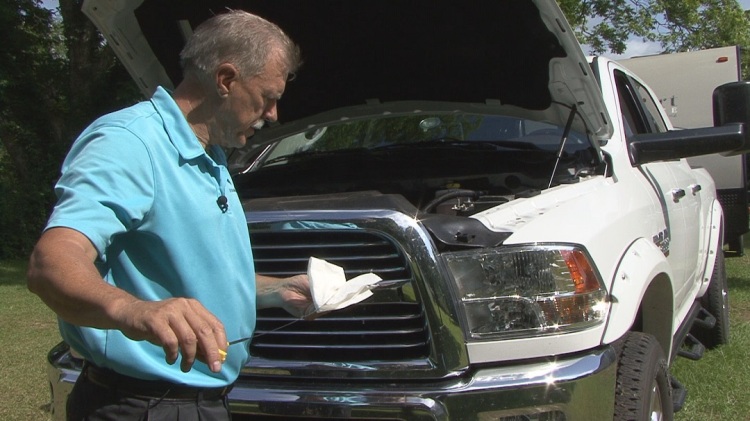
This section pertains to both motorized RVs and tow vehicles. Start by checking all fluid levels. Check the transmission, power steering, engine coolant, engine oil, windshield washer and brake fluid. Consult your vehicle owner’s manual for proper fluid levels. If a fluid level is low try to determine why and correct the problem. Service the engine and engine fluid levels according to specified intervals found in the vehicle owner’s manual. Start the engine and check for proper readings on all gauges. Check the operation of all lights. Make sure the vehicle emissions/inspection is current.
Watch this video to learn more about how to properly check vehicle fluid levels
RV Generator
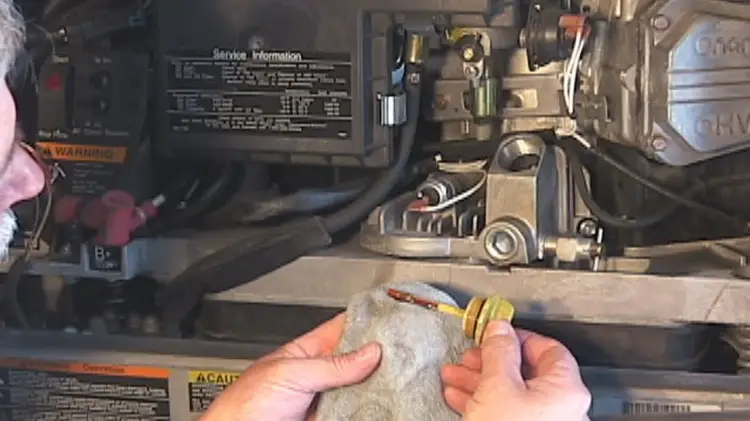
Check the oil level in the generator (if equipped). Service the generator according to specified intervals found in the owner’s manual. Inspect the generator exhaust system for any damage prior to starting. Never run a generator with a damaged exhaust system. If you didn’t exercise the generator during storage start it now and let it run for about two hours with at least a half-rated load. Check your generator owner’s manual for load ratings. If you didn’t use a fuel stabilizer and the generator won’t start, or continues to surge after starting have it checked and repaired by an authorized service facility.
Watch this informative video about the importance of exercising your generator.
Read a short article about how to service your generator in 15 minutes
RV Seams & Sealants

If you have the RV owner’s manual it will specify the intervals you should inspect and perform routine roof maintenance on your RV. This is extremely important because in many cases the RV warranty can be voided if these inspection and maintenance intervals aren’t followed. I always inspect the RV seams and sealants after storage, especially if the RV was stored outside. Another good habit to get into is to inspect the RV seams and sealants whenever you wash the RV and RV roof.
Caution: Exercise caution whenever you are working on your RV roof, a fall could result in serious injury or death.
When you inspect the seams and sealants on your RV roof look for cracked or dried out sealants that are separating, and possibly allowing water to penetrate the surface of the roof. If during your inspections you identify any potential leaks in the old sealant it will need to be resealed. It’s not a difficult job. One important step is to see if the water has already damaged the roof’s surface around the area where it penetrated the sealant. You can go inside the RV and feel around the area for soft spots, or look for signs of water staining. If the roof structure is damaged it will require repairs much more extensive than we are discussing here.
Watch How to Inspect your RV for Water Leaks Video
The goal is to identify potential leaks and seal the area before there is any damage to the roof or sidewalls. If I identify any cracked or separated sealant during an inspection, I remove old sealant that is loose around the area I am resealing. Be extremely careful not to tear the rubber roofing material as you remove old sealant. When the loose, cracked or dried out sealant is removed from the suspect area, clean the surface with denatured alcohol on a clean cloth. Always use the correct sealant with a caulking gun to reseal the area. Check your owner’s manual for the proper sealant to use, or talk to your RV dealer.
Note: If the old sealant is cracked, but not loose or separating from the surface it is not necessary to remove the old sealant. Clean the area using denatured alcohol and add new sealant over the area that is cracked.
If you aren’t comfortable working on the RV roof take the RV to an authorized RV repair facility to have the work performed. You should also inspect and reseal all of the other seams and sealants on the exterior of your RV after storage. Consult the RV owner’s manual or your RV dealer for sealants compatible with the surface you are attempting to repair or reseal.
Watch this video to learn how to apply lap sealants on your RV
RV Safety Stuff
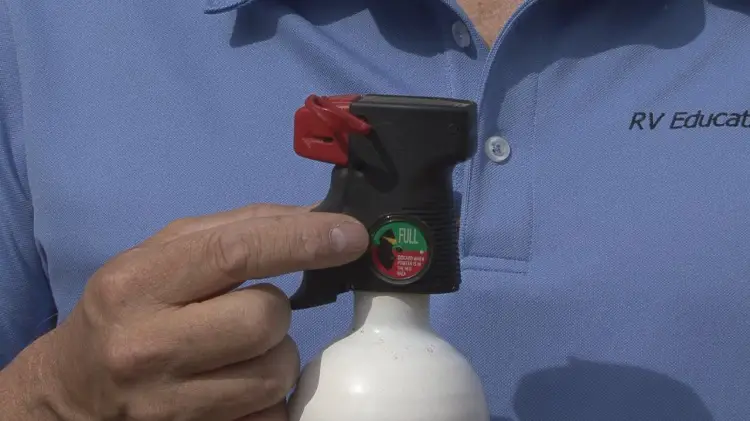
It’s important to check all of the safety devices for proper operation after sitting in storage. Re-install any dry-cell batteries or fuses that were removed for storage. If batteries were not removed from safety devices it’s a good idea to replace them with new batteries now. Test the operation of the carbon monoxide detector, LP gas leak detector and the smoke alarm. Inspect all fire extinguishers to make sure they are fully charged. If you have dry powder fire extinguishers shake it and tap it on the bottom to release any powder that settled to the bottom. Review how to properly use a fire extinguisher in the event you need to use it. Carbon Monoxide is deadly. Make sure everybody understands what carbon monoxide is, what the symptoms of carbon monoxide poisoning are, and what to do if you are exposed to CO gas. If you own an older RV that isn’t equipped with a CO detector, I highly recommend you purchase and install a CO detector designed for use in RVs.
This link goes to several RV safety related posts I have made in the past
I mentioned at the beginning of this article there are many more checks that can be made, but these are RV spring checks I consider essential in preparing your RV for another camping season. For a more in-depth look at getting your RV ready to roll check out our RV Care & Maintenance E-book course and our other RV training courses at RV Online Training
Happy Camping,
Mark J. Polk
RV 101® Travel Trailer Ultimate Video & E-book Bundle
https://rvonlinetraining.com/p/travel-trailer-ultimate-e-book-and-video-bundle
RV 101® 5th Wheel Ultimate Video & E-book Bundle
https://rvonlinetraining.com/p/rv-101-5th-wheel-ultimate-video-e-book-bundle
RV 101® Motorhome Ultimate Video & E-book Bundle
https://rvonlinetraining.com/p/rv-101-motorhome-ultimate-video-e-book-bundle
Travel Trailer & 5th Wheel Trailer RV Orientation Video Training Course
https://rvonlinetraining.com/p/rv-101-rv-orientation-for-travel-trailer-s-5th-wheel-trailers
Tow Your Travel Trailer Like a Pro Video Training Course
https://rvonlinetraining.com/p/rv-101-trailer-towing-basics
Tow Your 5th Wheel Like a Pro Complete Online Video Training Course
https://rvonlinetraining.com/p/tow-your-5th-wheel-like-a-pro
Motorhome RV Orientation Video Training Course
https://rvonlinetraining.com/p/motorhome-rv-orientation-video-training-course
Drive Your Motorhome Like A Pro Complete Online Video Training Course
https://rvonlinetraining.com/p/drive-your-motorhome-like-a-pro
RV Care & Preventive Maintenance RV DIY® Online Video Training
https://rvonlinetraining.com/p/rv-101-rv-care-preventive-maintenance-online-video-training
RV Essential Items Video Training Course
https://rvonlinetraining.com/p/rv-essential-items
Winterizing and Storing Your RV Video Training Course
https://rvonlinetraining.com/p/winterizing-and-storing-your-rv-video
Travel Trailer 4 Video Bargain Set Plus Free RV Checklist ebook
https://rvonlinetraining.com/p/travel-trailer-video-bundle
5th Wheel 4 Video Bargain Set Plus Free RV Checklist ebook
https://rvonlinetraining.com/p/5th-wheel-video-bundle
Motorhome 4 Video Bargain Set Plus Free RV Checklist ebook
https://rvonlinetraining.com/p/motorhome-video-bundle
———————–
A Collection of RV Education 101 E-Books – 9 RV E-BOOK BUNDLE SET
https://rvonlinetraining.com/p/a-collection-of-rv-education-101-e-books-9-rv-e-book-bundle-set
An Introduction to RVs E-book Training Course
https://rvonlinetraining.com/p/an-introduction-to-rvs
Insider’s Guide to Buying an RV E-Book Training Course
https://rvonlinetraining.com/p/insider-s-guide-to-buying-an-rv-downloadable-pdf-e-book
Owning & Operating an RV E-Book Training Course
https://rvonlinetraining.com/p/owning-operating-an-rv
The Original Checklists for RVers E-Book Training Course
https://rvonlinetraining.com/p/the-original-checklist-s-for-rvers
Official RV 101® Guides for Travel Trailer Bundled Set
https://rvonlinetraining.com/p/official-rv-101-guides-for-travel-trailers
Official RV 101® Guide To RV Water Heater Use & Care
https://rvonlinetraining.com/p/rv-water-heater-guide
Official RV 101® Guide – Trailer Towing, Weights & Safe Towing Explained
https://rvonlinetraining.com/p/official-rv-101-guide-trailer-towing-myths-weights-confusion-explained
Official RV 101® Guide to RV Generators
https://rvonlinetraining.com/p/official-rv-101-guide-to-rv-generators
Official RV 101® Guide to RV Water Systems
https://rvonlinetraining.com/p/official-rv-101-guide-to-rv-water-systems
Official RV 101® Guide to Understanding Trailer Sway
https://rvonlinetraining.com/p/official-rv-101-guide-to-understanding-trailer-sway
RV Campground Basics E-Book Training Course
https://rvonlinetraining.com/p/rv-campground-basics-e-book-course
RV Safety Features, Tips & Tricks E-book Training Course
https://rvonlinetraining.com/p/rv-safety-features-tips-tricks
https://rvonlinetraining.com/p/rv-care-maintenance-e-book-course
Winterizing & Storing Your RV E-Book Training Course
https://rvonlinetraining.com/p/winterizing-storing-your-rv-e-book
RV Battery Care & Maintenance E-Book Training Course
https://rvonlinetraining.com/p/rv-battery-care-maintenance
Trailer Towing Basics E-Book Training Course
https://rvonlinetraining.com/p/trailer-towing-basics-e-book
RV Care & Maintenance E-Book Training Course
https://rvonlinetraining.com/p/rv-care-maintenance-e-book-course
Winterizing & Storing Your RV E-Book Training Course
https://rvonlinetraining.com/p/winterizing-storing-your-rv-e-book
RV Battery Care & Maintenance E-Book Training Course
https://rvonlinetraining.com/p/rv-battery-care-maintenance
Trailer Towing Basics E-Book Training Course
https://rvonlinetraining.com/p/trailer-towing-basics-e-book



